Why a Mini Vegetable Garden is Your Next Best Project
The call of fresh, homegrown produce is undeniable, even for those with limited space. In fact, a recent survey revealed that over 70% of urban dwellers are now actively engaged in some form of home gardening, with mini vegetable gardens leading the charge! This isn’t just a trend; it’s a lifestyle revolution. A beautiful mini vegetable garden offers a personal oasis, transforming balconies, patios, and small yards into vibrant, productive landscapes.
Beyond providing fresh, organic ingredients right outside your door, these compact patches offer incredible benefits. Imagine the stress relief of nurturing plants, the joy of harvesting your own food, and the sheer beauty they add to your home. This comprehensive guide will equip you with foundational design principles, inspiring layout ideas, step-by-step DIY plans, and expert tips to cultivate a thriving mini vegetable garden, no matter your space or experience.
TABLE OF CONTENTS
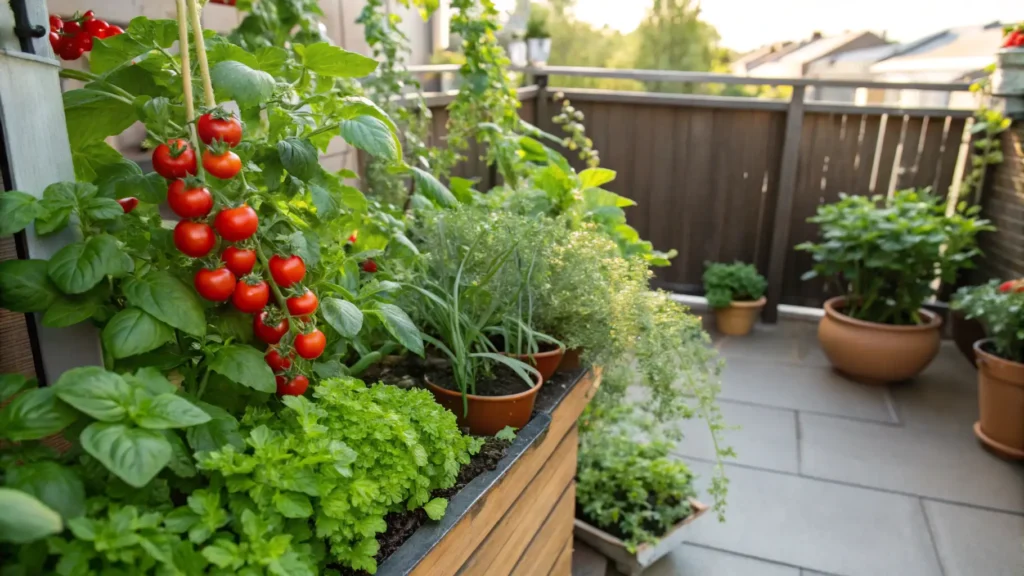
Foundational Design Principles for a Beautiful & Productive Mini Garden
Designing a small vegetable garden isn’t just about fitting plants into a corner; it’s an art that blends aesthetics with smart horticulture. To truly maximize both beauty and yield, understanding core design principles is key. We’re going beyond simple planting to help you create a beautiful mini vegetable garden layout that flourishes.
Key principles include:
- Maximizing Space: Think vertically and in layers. Utilize walls, fences, and tiered planters to grow upward, and consider companion planting to layer different plant heights and root depths within the same area.
- Visual Appeal (Aesthetics): Integrate your garden seamlessly into your living space. Consider a potager style where edible plants are arranged like ornamentals, focusing on color, texture, and form. Use attractive containers and create focal points.
- Sunlight and Water Access: Most vegetables need at least 6-8 hours of direct sunlight. Orient your garden to capture maximum sun, and plan for efficient watering systems like drip irrigation to conserve water.
- Accessibility: Ensure you can easily reach all your plants for watering, weeding, and harvesting. Pathways (even narrow ones) or well-placed containers are crucial.
- Zoning for Plant Needs: Group plants with similar light, water, and soil requirements together. This simplifies care and ensures each plant gets what it needs to thrive in your small vegetable garden design.
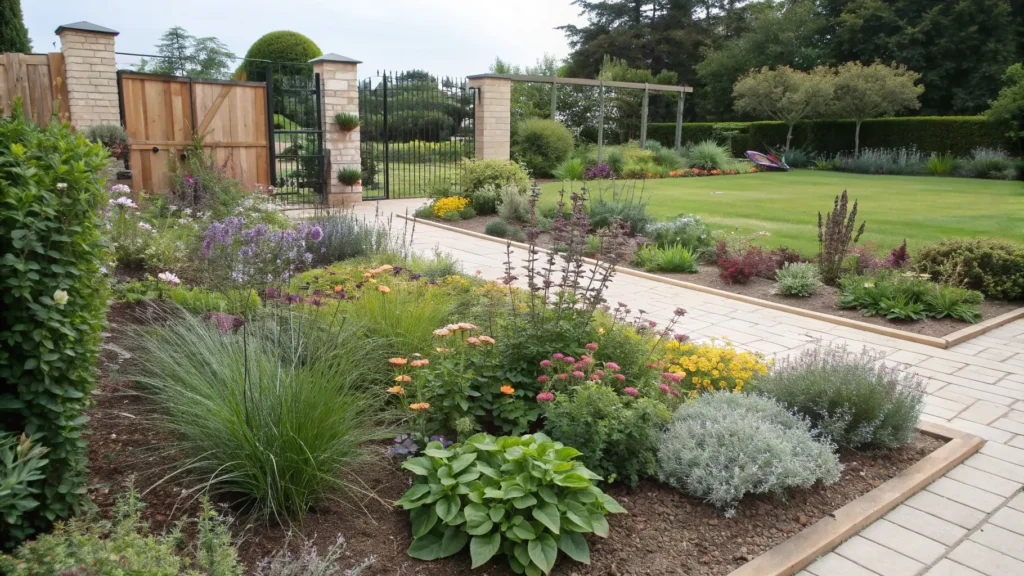
Understanding Your Space: Light, Location, and Logistics
Before you choose a single plant or container, conduct a thorough assessment of your gardening site. This foundational step dictates the success of your beautiful mini vegetable garden layout.
Consider these factors:
- Sunlight Requirements: Observe how much direct sun your chosen spot receives throughout the day. Map areas that get full sun (6-8+ hours), partial sun (4-6 hours), and shade (less than 4 hours).
- Wind Protection: Strong winds can damage delicate plants and dry out soil quickly. Look for natural windbreaks or consider installing screens.
- Water Source Proximity: Easy access to water is essential. Plan for hose reach or efficient watering systems.
- Existing Structures/Features: How do existing walls, fences, or trees impact light, shade, and wind? Can they be integrated into your design?
- Local Climate Considerations: Understand your USDA hardiness zone and local microclimates (e.g., warmer near a brick wall, cooler in a shaded corner).
Explore Diverse Mini Vegetable Garden Layout Ideas for Every Space
Ready for inspiration? This section dives into a wealth of beautiful mini vegetable garden layout ideas, showcasing how adaptable and diverse small-space gardening can be. We’ve synthesized the best concepts to help you find the perfect fit for your home.
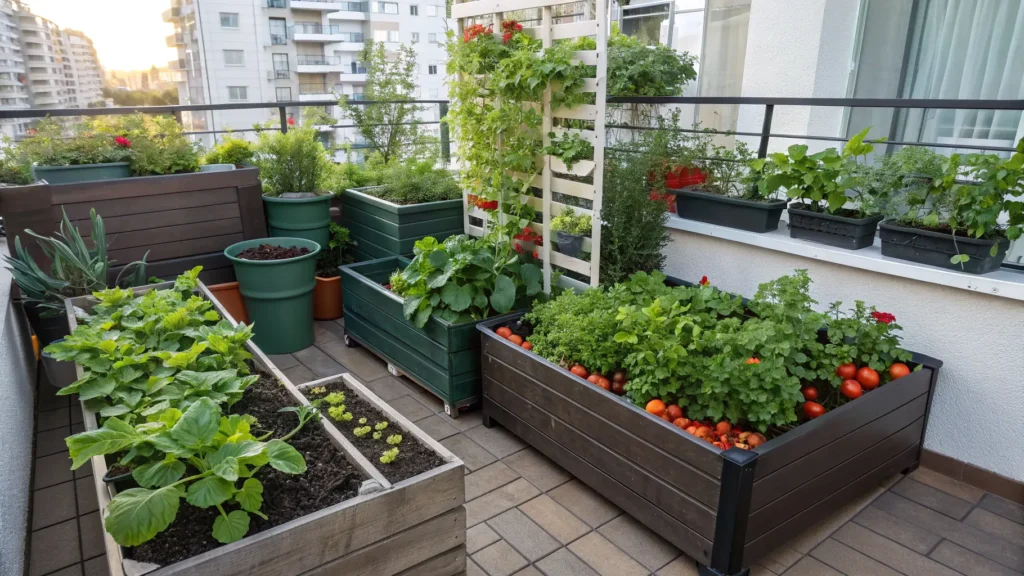
Each idea is presented with actionable advice, making it easy to envision in your own space:
- Container Gardens: The ultimate in flexibility.
- Raised Beds (Small Footprint): Ideal for dedicated ground space.
- Vertical Gardens: Maximizing every inch of upward growth.
- Balcony & Patio Specific Layouts: Tailored for elevated spaces.
- Edible Landscaping/Potager Styles: Blending beauty with bounty.
- Window Box Gardens: Charming and convenient.
- Unique Repurposed Ideas: Creative and budget-friendly.
Creative Container Garden Layouts: Flexibility & Mobility
Containers are the foundation of many small vegetable garden designs, offering unparalleled flexibility. They’re perfect for renters, those with limited ground space, or anyone who likes to rearrange their garden regularly.
- Tiered Container Arrangements: Use varying pot heights or purpose-built tiered planters to create visual interest and maximize vertical space on a small footprint. Best For: Balconies, patios, small corners.
- Grouping for Impact: Arrange pots in clusters to create a cohesive mini garden “room.” Vary textures, colors, and plant sizes for a lush look. Best For: Entryways, large patios.
- Grow Bag Benefits: Lightweight, affordable, and excellent for aeration. Grow bags are fantastic for potatoes, root vegetables, and tomatoes. Best For: Budget-conscious gardeners, temporary setups.
- Repurposing Everyday Items: Old tires, wooden crates, even large tin cans can become unique planters with proper drainage. Best For: Upcycling enthusiasts, rustic aesthetics.
- Choosing the Right Container: Material (terracotta, plastic, fabric, wood) affects water retention. Size is crucial – ensure enough room for roots.
- “Herb Tower”: Plant rosemary (top), basil (middle), and mint (bottom) in a tiered planter.
- “Salad Bowl Mix”: Combine various lettuce varieties, spinach, arugula, and radishes in a wide, shallow bowl for continuous harvest.
- “Pizza Garden”: Tomatoes, bell peppers, basil, oregano in three separate pots grouped together.
Efficient Raised Bed Designs for Small Footprints
Raised beds offer excellent soil control, drainage, and improved accessibility, making them a popular choice for miniature edible garden layouts in small yards or even paved areas.
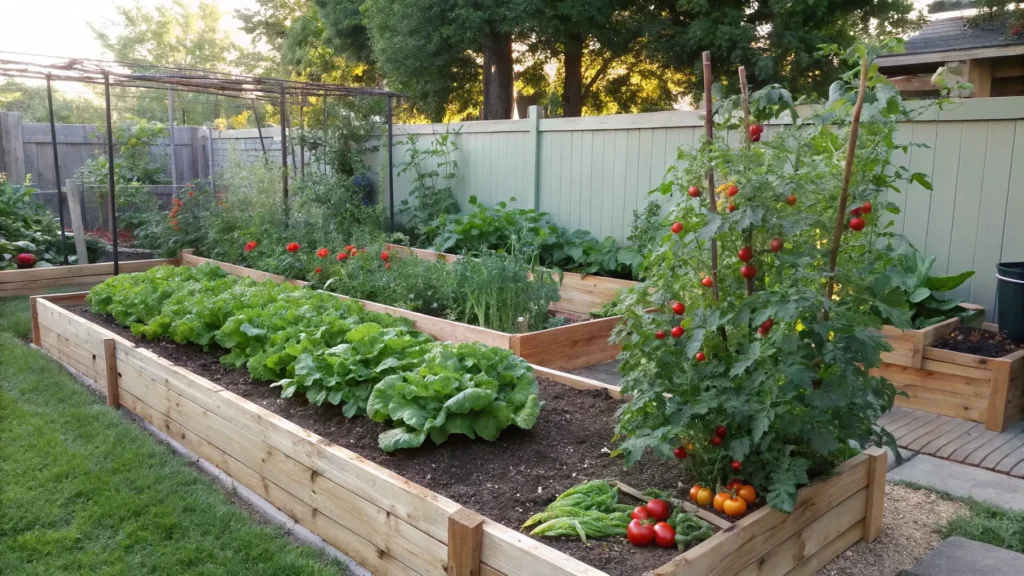
- Compact Shapes: Square-foot gardening principles work wonderfully here. Design small, intensely planted square or rectangular beds, or use L-shapes to wrap around corners.
- Benefits: Better drainage, warmer soil earlier in spring, reduced weeding, and easy customization of soil mix. They’re also easier on the back!
- Material Options:
- Wood: Cedar (naturally rot-resistant), redwood, or untreated pine are common.
- Metal: Galvanized steel is durable and has a modern aesthetic.
- Stone/Brick: Offers a classic look and extreme longevity, though more labor-intensive to install.
Innovative Vertical Garden Solutions: Maximizing Upward Growth
When horizontal space is a luxury, go vertical! Vertical gardens are a game-changer for tiny spaces, transforming walls, fences, and even railings into productive gardening real estate. They are perfect for vertical garden plans in urban settings.
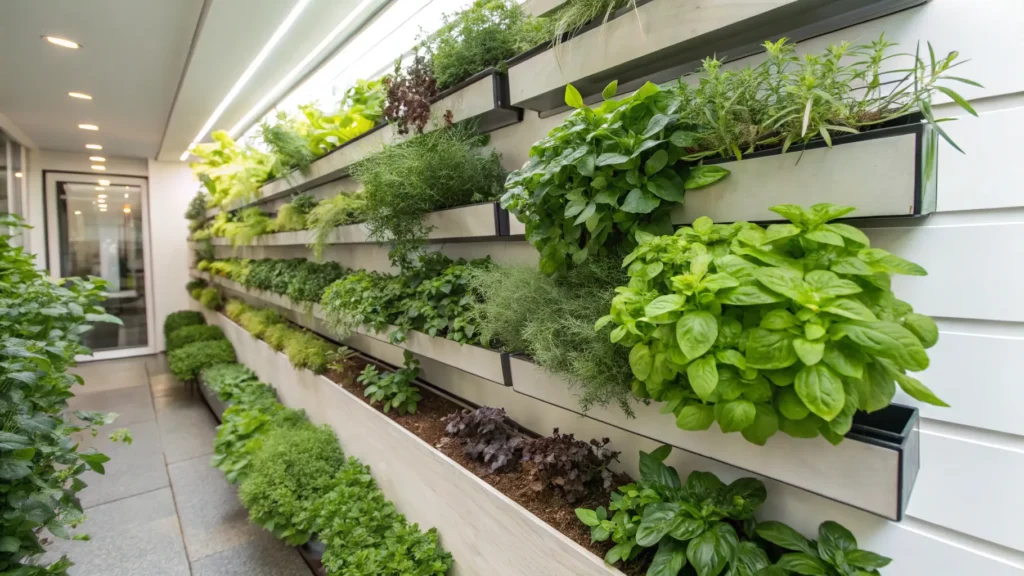
- Pallet Gardens: Upcycle wooden pallets into vertical planters. Easy to assemble and cost-effective.
- Wall-Mounted Planters: Systems that attach directly to a wall, featuring pockets or shelves.
- Gutter Gardens: Repurpose old gutters into horizontal planting troughs, stacked vertically.
- Stackable Planters: Modular pots designed to stack on top of each other, forming a tower.
- Plant Selection: Choose compact, shallow-rooted, and vining varieties that cascade or climb. Leafy greens, herbs, strawberries, and cherry tomatoes are excellent choices.
DIY Mini Vegetable Garden Plans: Build Your Dream Patch This Weekend
Transforming an inspiring layout idea into a tangible garden is incredibly rewarding. This section provides concrete, step-by-step DIY mini vegetable garden plans, allowing you to build your dream patch with confidence, even if you’re a beginner. We break down the how-to, costs, and time for popular projects, fulfilling your “build it” intent.
Simple Raised Bed Plan (3’x3′)
This classic design is perfect for beginners and small yards, offering excellent drainage and soil control.
- Materials:
- (4) 2x6x8′ untreated lumber (cedar or redwood recommended)
- (16) 3-inch deck screws
- Landscaping fabric (optional, for the bottom)
- 1 bag of organic topsoil mix
- 2 bags of organic compost
- Tools: Measuring tape, pencil, saw (miter or circular), drill with screwdriver bit, level.
- Steps:
- Cut each 8′ board in half to create eight 4′ boards. (Wait, for a 3×3, it’s simpler: Cut two 8′ boards into four 3′ sections and four 1.5′ sections. Or, for a 3’x3′ bed: cut two 2x6x8′ boards into four 3′ sections and two 2′ sections. Let’s simplify this to make it genuinely easy).
- Revised materials for 3’x3′ bed: (2) 2x6x8′ untreated lumber, (16) 3-inch deck screws.
- Steps for a 3’x3′ bed:
- From each 8′ board, cut two 3-foot sections. You will have four 3-foot sections in total.
- Arrange two 3-foot sections parallel, and place the other two 3-foot sections perpendicular to form a square.
- Screw the corners together, using 2 screws per joint, ensuring they are flush.
- (Optional) Staple landscaping fabric to the bottom of the bed to deter weeds.
- Place the raised bed in its desired location.
- Fill with a mix of topsoil and compost.
- Estimated Cost Breakdown: $50-$100 (lumber), $10 (screws), $30-$50 (soil/compost). Total: $90-$160.
- Time Required: 1-2 hours.
Upcycled Pallet Garden (Vertical)
A creative and budget-friendly way to go vertical.
- Materials:
- (1) wooden pallet (heat-treated “HT” stamp, not “MB” methyl bromide)
- Heavy-duty landscaping fabric or weed barrier
- Staple gun with staples
- Potting mix
- Seedlings/seeds
- Tools: Gloves, sandpaper (optional), hammer/crowbar (if disassembling for repairs).
- Steps:
- Clean the pallet thoroughly. Sand any rough edges if desired.
- Identify the bottom of the pallet (usually the side with fewer gaps).
- Along the inside of each “shelf” (the gaps between the slats), staple landscaping fabric to create pockets for soil, leaving the top open. Ensure the fabric is secure.
- Prop the pallet upright against a sturdy wall or fence.
- Fill the fabric pockets with potting mix and plant your desired vegetables (leafy greens, herbs, strawberries work well).
- Estimated Cost Breakdown: Free-$20 (pallet), $15 (fabric), $20 (potting mix). Total: $35-$55.
- Time Required: 2-3 hours.
Vertical Gutter Garden Instructions
Turn old gutters into a stylish, productive wall garden.
- Materials:
- (3-5) lengths of vinyl or aluminum gutters (e.g., 4-6 feet long each)
- (6-10) gutter end caps
- (6-10) gutter hangers/brackets
- Drill with small bit (for drainage holes)
- Screws appropriate for your wall/fence material
- Potting mix, seedlings/seeds
- Tools: Measuring tape, pencil, hacksaw (for cutting gutters if needed), drill.
- Steps:
- Measure and cut gutters to desired lengths.
- Attach end caps to each end of the gutter sections.
- Drill small drainage holes (1/4 inch) every 6-8 inches along the bottom of each gutter.
- Attach gutter hangers to your wall or fence, spacing them evenly. Ensure the first gutter is at an accessible height, and subsequent gutters are spaced to allow for plant growth and sunlight.
- Snap the gutters into the hangers.
- Fill with potting mix and plant shallow-rooted vegetables and herbs.
- Estimated Cost Breakdown: $50-$100 (gutters/accessories), $20 (potting mix). Total: $70-$120.
- Time Required: 3-5 hours.
Maximizing Yield & Beauty: Smart Planting & Care for Your Mini Garden
A truly beautiful mini vegetable garden layout doesn’t just look good; it’s a powerhouse of productivity. This section delves into the strategic planting and ongoing care that ensures a bountiful and consistently appealing harvest in your small space.
- Optimal Plant Selection for Small Spaces:
- Compact/Dwarf Varieties: Look for terms like “bush,” “dwarf,” or “patio” in seed descriptions (e.g., bush cucumbers, patio tomatoes, dwarf beans).
- Continuous Harvest Varieties: Opt for plants that produce over a long period (e.g., leafy greens, cherry tomatoes, pole beans) rather than a single large harvest.
- High-Yielding in Small Footprint: Radishes, carrots (short varieties), spinach, Swiss chard, and herbs are excellent choices.
- Companion Planting for Mini Gardens: Strategic pairings can deter pests, attract beneficial insects, and even improve flavor.
- Beneficial Pairings: Tomatoes and basil (flavor), Marigolds and most vegetables (pest deterrence), Nasturtiums and cabbage (trap cropping).
- Avoid: Keep dill away from carrots, and fennel away from most vegetables.
- Succession Planting & Year-Round Planning: Don’t plant everything at once! Stagger plantings every 2-3 weeks to ensure a continuous harvest. In warmer climates, plan for multiple seasons.
- Watering & Fertilizing Strategies:
- Drip Irrigation/Self-Watering Pots: Essential for consistent moisture and water conservation in containers and raised beds.
- Organic Feeds: Use balanced organic liquid fertilizers or compost tea every few weeks, especially for heavy feeders like tomatoes.
- Integrated Pest & Disease Management:
- Organic Methods: Hand-picking pests, insecticidal soap, neem oil, introducing beneficial insects (e.g., ladybugs).
- Preventative Care: Healthy soil, proper watering, good air circulation, and crop rotation even in small spaces are your best defense.
Budget-Friendly Mini Garden Solutions: Grow More for Less
Starting a new hobby can sometimes feel expensive, but creating a beautiful mini vegetable garden layout doesn’t have to break the bank. Many incredible solutions exist to grow more for less, making mini gardening accessible to everyone.
- Utilizing Recycled & Upcycled Materials:
- Containers: Old tires, five-gallon buckets, laundry baskets, plastic storage bins, wooden crates, tin cans (with drainage holes added).
- Support Structures: Fallen branches for trellises, old blinds for plant labels.
- Cost-Effective Seed Starting vs. Buying Seedlings:
- Starting from seed is significantly cheaper in the long run, especially for common vegetables.
- If buying seedlings, look for sales or plant swaps with neighbors.
- DIY vs. Pre-Made Kits Comparison:
- DIY options (like the pallet garden or basic raised bed discussed earlier) are almost always cheaper than pre-fabricated kits, though they require more time.
- Pre-made kits offer convenience but come at a premium.
- Long-Term Savings Strategies:
- Seed Saving: Save seeds from your successful open-pollinated plants.
- Composting: Create your own nutrient-rich compost from kitchen scraps and yard waste.
- Propagating Cuttings: Grow new plants from cuttings of herbs and some vegetables.
- Essential vs. Optional Tools: Start with the basics: trowel, hand pruners, watering can. You can always expand your tool collection later.
Our Unique Angle: To help you plan your initial investment wisely, we’ve created a comparative “Cost Comparison Table” showing estimated initial setup costs for various mini vegetable garden layout ideas:
| Garden Type | Estimated Initial Cost (Materials & Basic Soil) | Best For |
|---|---|---|
| Basic Container Garden | $30 – $70 | Ultimate flexibility, small balconies |
| Small Raised Bed (3’x3′) | $90 – $160 | Dedicated small yard, good soil control |
| Vertical Pallet Garden | $35 – $55 | Very tight spaces, vertical walls |
| Window Box Garden | $20 – $60 | Windowsills, very small ledges |
Sustainable Practices for Your Eco-Friendly Mini Vegetable Garden
A beautiful mini vegetable garden layout can also be a beacon of sustainability. Integrating eco-friendly practices not only benefits the planet but often leads to healthier, more resilient plants and saves you money.
- Water Conservation Techniques:
- Rain Barrels: Collect rainwater for irrigation – it’s free and better for plants than chlorinated tap water.
- Drip Irrigation/Soaker Hoses: Deliver water directly to the root zone, minimizing evaporation.
- Mulching: A layer of straw, wood chips, or shredded leaves retains soil moisture, suppresses weeds, and regulates soil temperature.
- Sourcing Eco-Friendly Materials:
- Recycled Plastics: Choose containers made from recycled plastic.
- Sustainably Harvested Wood: Opt for FSC-certified wood for raised beds or untreated wood that can be naturally sealed.
- Organic Soil & Amendments: Use peat-free potting mixes and organic fertilizers.
- Small-Space Composting:
- Worm Bins (Vermicomposting): Excellent for breaking down kitchen scraps into rich fertilizer in a compact, odor-free system.
- Compact Composters: Small tumblers or stationary bins are available for balconies or patios.
- Attracting Beneficial Insects & Pollinators:
- Plant pollinator-friendly flowers (marigolds, nasturtiums, borage) alongside your vegetables.
- Avoid synthetic pesticides that harm beneficial insects.
Inspiration & Community: Real Mini Garden Success Stories
Seeing is believing, and nothing is more inspiring than real-world examples of thriving beautiful mini vegetable garden layout ideas. These success stories from our community demonstrate that with creativity and care, anyone can cultivate an abundant mini garden.
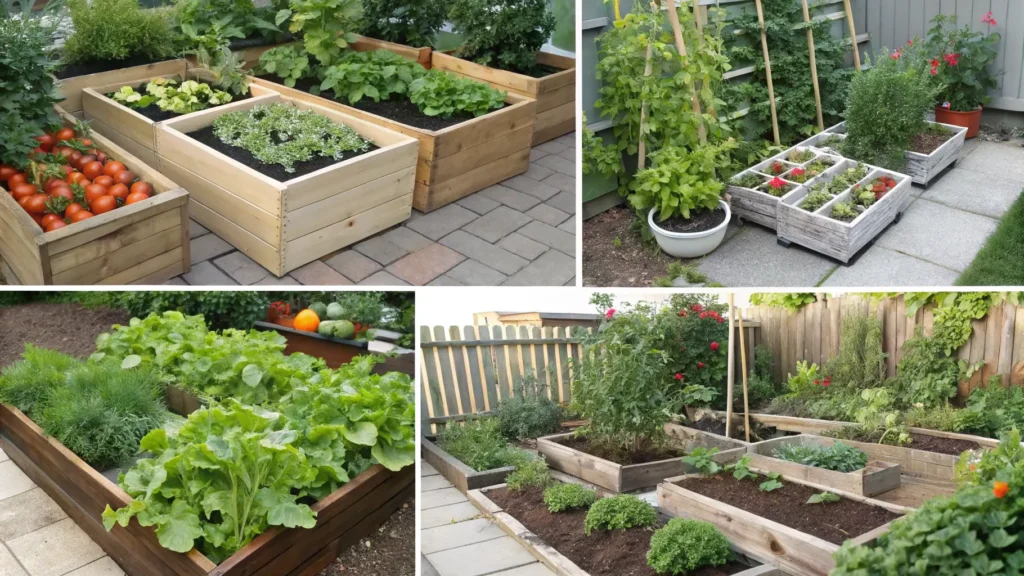
- Showcasing Diverse Mini Gardens: We highlight a variety of successful setups, from vibrant balcony gardens in bustling cities to ingenious raised beds in suburban backyards. Each story includes images, a brief description, and insights from the gardeners themselves about challenges they overcame and their unique solutions.
- Meet Maria’s Balcony Bounty: Maria transformed her tiny apartment balcony into a year-round salad bar using stackable planters and grow bags, proving that even a 4×6 foot space can be incredibly productive.
- John’s Repurposed Pallet Patch: John, a DIY enthusiast, built a stunning vertical garden from old pallets, showcasing how repurposed materials can create beautiful and functional designs.
- The Urban Classroom Project: A community initiative demonstrating how a small, shared space can yield fresh produce for many, fostered through collective effort and smart design.
- Highlighting Challenges & Creative Solutions: Many gardeners face similar hurdles – limited sunlight, pest issues, or budget constraints. These stories offer practical solutions born from real experience.
Frequently Asked Questions About Mini Vegetable Gardens (FAQ)
Here are quick, expert-backed answers to some of the most common questions about designing and maintaining a beautiful mini vegetable garden layout.
Q: What are the best vegetables for a mini garden? A: Compact varieties of leafy greens (lettuce, spinach, kale), herbs (basil, mint, parsley), radishes, carrots (short varieties), bush beans, dwarf tomatoes, and strawberries are excellent choices. Look for “patio” or “bush” designations on seed packets.
Q: How much sun does a mini vegetable garden need? A: Most fruiting vegetables (tomatoes, peppers, beans) require at least 6-8 hours of direct sunlight per day. Leafy greens and many herbs can tolerate partial sun (4-6 hours), while root vegetables often prefer full sun but can manage with slightly less.
Q: Can I grow organic vegetables in a small space? A: Absolutely! Growing organic in a small space is often easier as you have more control over your soil mix and can hand-pick pests. Use organic seeds, peat-free organic potting mix, and organic fertilizers, and avoid synthetic pesticides.
Q: How often should I water my mini garden? A: This depends on several factors: container size, plant type, weather, and soil mix. Containers generally dry out faster than in-ground beds. Check the soil moisture daily by sticking your finger an inch or two deep; if it feels dry, it’s time to water. Drip irrigation can automate this effectively.
Q: What are common mistakes to avoid in a mini garden? A: Common mistakes include overcrowding plants (leads to poor air circulation and disease), insufficient drainage in containers, not enough sunlight, inconsistent watering, and neglecting pest inspection. Plan your mini vegetable garden layout carefully to avoid these pitfalls.
Q: How do I protect my mini garden from pests naturally? A: Use companion planting (e.g., marigolds), hand-pick larger pests, use insecticidal soap or neem oil for smaller infestations, encourage beneficial insects (ladybugs, lacewings), and maintain plant health to increase natural resistance.
Cultivate Your Dream: Your Beautiful Mini Vegetable Garden Awaits
You’re now equipped with the ultimate guide to creating a truly remarkable and beautiful mini vegetable garden layout. We’ve journeyed from foundational design principles to diverse layout ideas, through step-by-step DIY plans, and explored smart planting, budgeting, and sustainable practices. The insights and inspiration provided here uniquely combine visual appeal with practical horticulture, ensuring your small space isn’t just pretty, but bountiful and resilient.
Whether you’re starting with a single pot or transforming an entire balcony, the path to homegrown deliciousness and serene beauty is clear. Embrace the joy of gardening in miniature, and watch your efforts blossom. Start planning your perfect patch today, and soon you’ll be harvesting fresh, vibrant produce from your very own beautiful mini vegetable garden. The definitive resource is here now go grow something amazing!
